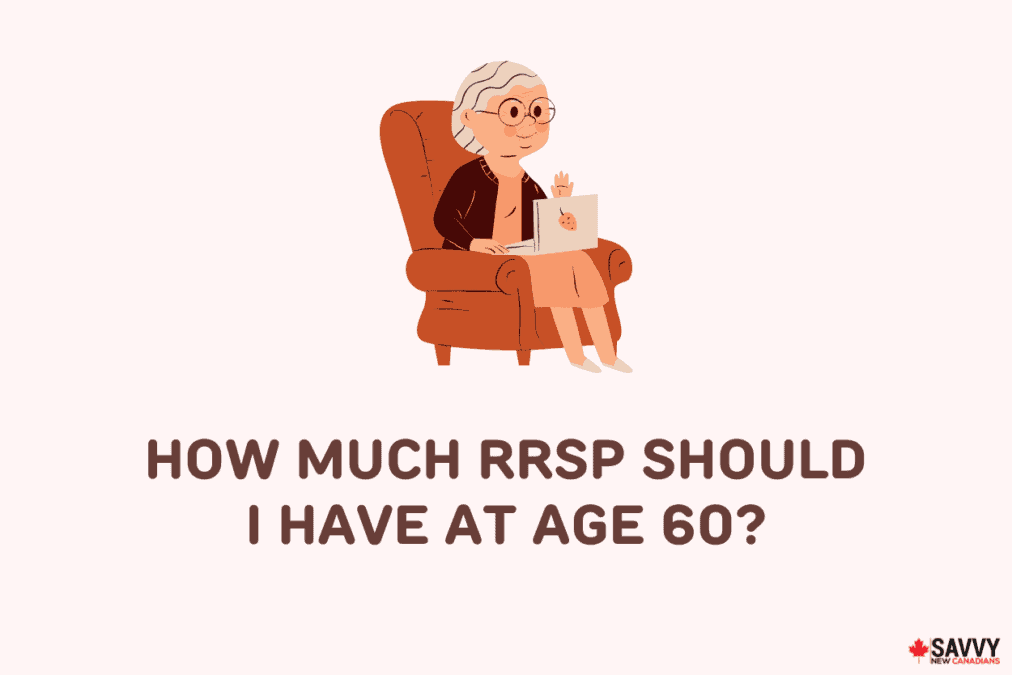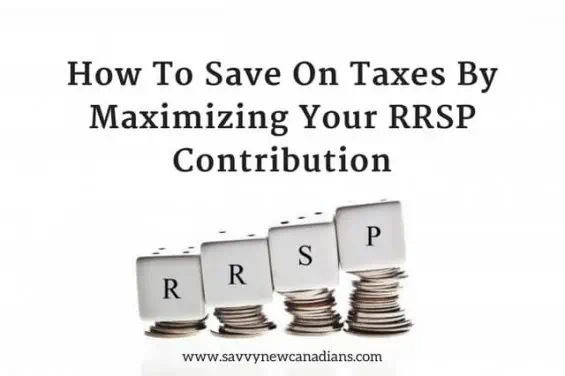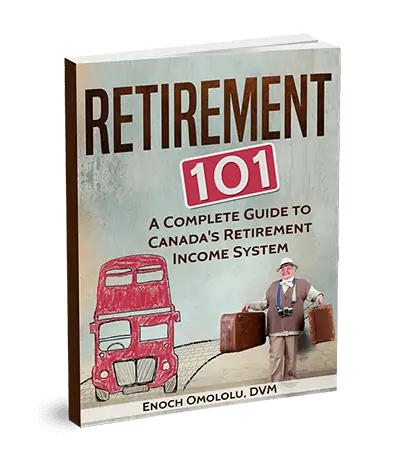How much money should you have saved at age 60?
At age 60, you could be eligible to start collecting your Canada Pension Plan (CPP) benefits, and you are only 5 years away from becoming eligible for the Old Age Pension (OAS).
While these pillars of retirement income (i.e. OAS and CPP) can cover a significant portion of your retirement income needs, they will likely not be adequate.
And this is where other retirement accounts like your RRSP come into play.
This article covers how much RRSP you should have by age 60, how to calculate your income needs in retirement, and more.
Retirement Savings By Age in Canada
I focus on RRSP savings here, but retirement savings usually include other income sources and tools such as the Tax-Free Savings Account (TFSA), government-administered pension plans (OAS and CPP), and workplace retirement plans.
When all these are factored into your retirement savings, you will likely need a lot less than imagined in your RRSP.
As discussed in this RRSP at age 30 article, I will be using salary multiples for various ages as suggested by T. Rowe Price.
Table 1:
| Investor’s Age | Savings Benchmark | Midpoint |
| 30 years | Half of Salary | 1/2x |
| 35 years | 1x to 1.5x salary | 1x |
| 40 years | 1.5x to 2.5x salary | 2x |
| 45 years | 2.5x to 4x salary | 3x |
| 50 years | 3x to 5.5x salary | 5x |
| 55 years | 4.5x to 8x salary | 7x |
| 60 years | 6x to 11x salary | 9x |
| 65 years | 7x to 13.5x salary | 11x |
How Much RRSP Should You Have at Age 60?
Based on the multiples we have discussed above, you should have 6 to 11 times your annual income in retirement savings.
While it is impractical to state an exact amount you must have saved, a multiple makes it easy to estimate RRSP savings based on your circumstances.
We can also use the median and average incomes for Canadians to provide ‘reasonable’ benchmarks.
As per Statistics Canada, the average and median annual incomes as of 2020 were:
- Average annual income for the 55 to 64 age group: $56,800
- Median annual income for the 55 to 64 age group: $43,900
Using the average income and the mid-point multiple in Table 1, you should have approximately $511,200 in savings by age 60 (i.e. $56,800 x 9).
If we use the median number, which excludes those with significantly higher income than the average, you should have around $395,100 in savings at age 60 (calculated as $43,900 x 9)
Table 2:
| Income Statistics | RRSP Target at Age 60 |
| Average income for age group 55 to 64 | $511,200 |
| Median income for age group 55 to 64 | $395,100 |
Assumptions:
- You are earning close to the median or average wage for your age group. If you are not, you can simply multiply your annual income by 9.
- We are using the midpoint multiple of 9. As per Table 1, the recommended range is 6x to 11x.
- All your savings are in RRSPs. Realistically, you probably have savings in TFSAs and employer pension plans as well.

What If You Are Behind at Age 60?
The CPP and OAS will provide some income in requirement. That said, you will need your private savings and workplace pensions to cover any shortfalls.
If you are behind on saving for retirement, you should start right away and also consider:
- Delaying your retirement by a few years
- Plan for a modest retirement and cut your expenses
- Delay OAS and CPP for some years to increase how much you will receive
- Work part-time in retirement
At age 60+, you may also want to be more conservative with your investment portfolio so as to preserve your capital to an extent.
How To Calculate Retirement Income Needs
How much income you need in retirement is impacted by your age at retirement, how much you plan to spend annually, and how much government pensions (and workplace pensions) you are expecting.
Other factors like your lifestyle in retirement, life expectancy, health needs, and financially dependent children also come into play.
Couple RRSP Needs
Assuming a couple determines they need $65,000 per year to live comfortably in retirement.
Using the average CPP amount of $9,099.84 (i.e. $758.32 x 12 months – average as of 2024) and full OAS pension amount of $8,560.08 (i.e. $713.34 x 12 months – maximum as of March 2024 for those aged 65-74), they can expect a total pension amount of $35,319.84 per year.
Table 3:
| Annual OAS | Annual CPP | Total | |
| Spouse 1 | $8,560.08 | $9,099.84 | $17,659.92 |
| Spouse 2 | $8,560.08 | $9,099.84 | $17,659.92 |
| Total | – | – | $35,319.84 |
They have a shortfall of $29,680.16 ($65,000 – $35,319.84), which will be covered by their RRSP, TFSA, and/or workplace pension benefits.
Assuming they only have an RRSP, they will need an extra $742,004 in their combined RRSP accounts at age 65, using a 4% safe withdrawal rate.
TFSA and workplace pension benefits lower this amount.
Single Individual RRSP Needs
Assuming a single individual determines they need $40,000 per year in retirement.
Using the average CPP and full OAS amounts of $9,099.84 and $8,560.08, respectively, they can expect a total pension amount of $17,659.92 per year as of March 2024.
They have a shortfall of $22,340.08 (i.e. $40,000 – $17,659.92), which has to be covered by their RRSP, TFSA, and/or workplace pension plans.
If they only have an RRSP, they will need $558,502 in their retirement pot (based on a 4% safe withdrawal rate).
To summarize (Table 4):
| Single | Couple | |
| Retirement income need | $40,000 | $65,000 |
| Minus government pensions (OAS & CPP) | $17,659.92 | $35,319.84 |
| Minus TFSA | $0 | $0 |
| Minus workplace pension | $0 | $0 |
| Shortfall in Retirement savings | $22,340.08 | $29,680.16 |
| Safe withdrawal rate | 4% | 4% |
| RRSP Nest Egg required | $558,502 | $742,004 |
Assumptions:
- No TFSA, workplace pension, or non-registered investment account is included
- 4% safe withdrawal (some argue it is too high and others say it is too low)
- The RRSP nest egg is calculated as “shortfall x 25” or “shortfall ÷ 4%
- We are basing these estimates on today’s dollars
RRSP Calculator
Related:





